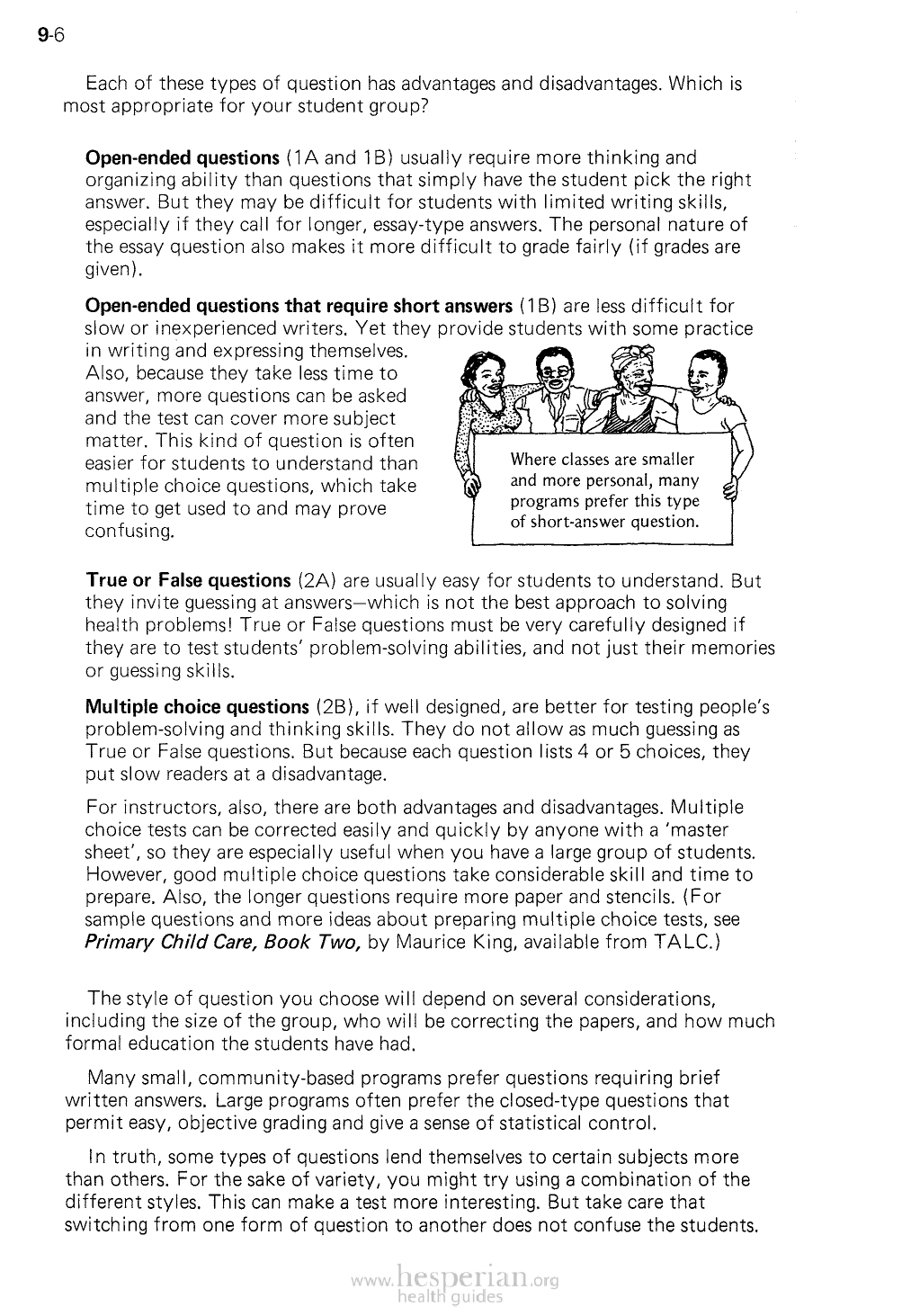
9-6
Each of these types of question has advantages and disadvantages. Which is
most appropriate for your student group?
Open-ended questions (1A and lB) usually require more thinking and organizing
ability than questions that simply have the student pick the right answer. But they
may be difficult for students with limited writing skills, especially if they call for
longer, essay-type answers. The personal nature of the essay question also makes
it more difficult to grade fairly (if grades are given).
Open-ended questions that require short answers (lB) are less difficult for
slow or inexperienced writers. Yet they provide students with some practice in
writing and expressing themselves.
Also, because they take less time to
answer, more questions can be asked
and the test can cover more subject
matter. This kind of question is often
easier for students to understand than
multiple choice questions, which take
time to get used to and may prove
confusing.
Where classes are smaller
and more personal, many
programs prefer this type of
short-answer question.
True or False questions (2A) are usually easy for students to understand. But
they invite guessing at answers—which is not the best approach to solving health
problems! True or False questions must be very carefully designed if they are to
test students’ problem-solving abilities, and not just their memories or guessing
skills.
Multiple choice questions (2B), if well designed, are better for testing people’s
problem-solving and thinking skills. They do not allow as much guessing as True
or False questions. But because each question lists 4 or 5 choices, they put slow
readers at a disadvantage.
For instructors, also, there are both advantages and disadvantages. Multiple
choice tests can be corrected easily and quickly by anyone with a ‘master sheet’, so
they are especially useful when you have a large group of students. However, good
multiple choice questions take considerable skill and time to prepare. Also, the
longer questions require more paper and stencils. (For sample questions and more
ideas about preparing multiple choice tests, see Primary Child Care, Book Two, by
Maurice King, available from TALC.)
The style of question you choose will depend on several considerations, including
the size of the group, who will be correcting the papers, and how much formal
education the students have had.
Many small, community-based programs prefer questions requiring brief written
answers. Large programs often prefer the closed-type questions that permit easy,
objective grading and give a sense of statistical control.
In truth, some types of questions lend themselves to certain subjects more than
others. For the sake of variety, you might try using a combination of the different
styles. This can make a test more interesting. But take care that switching from one
form of question to another does not confuse the students.